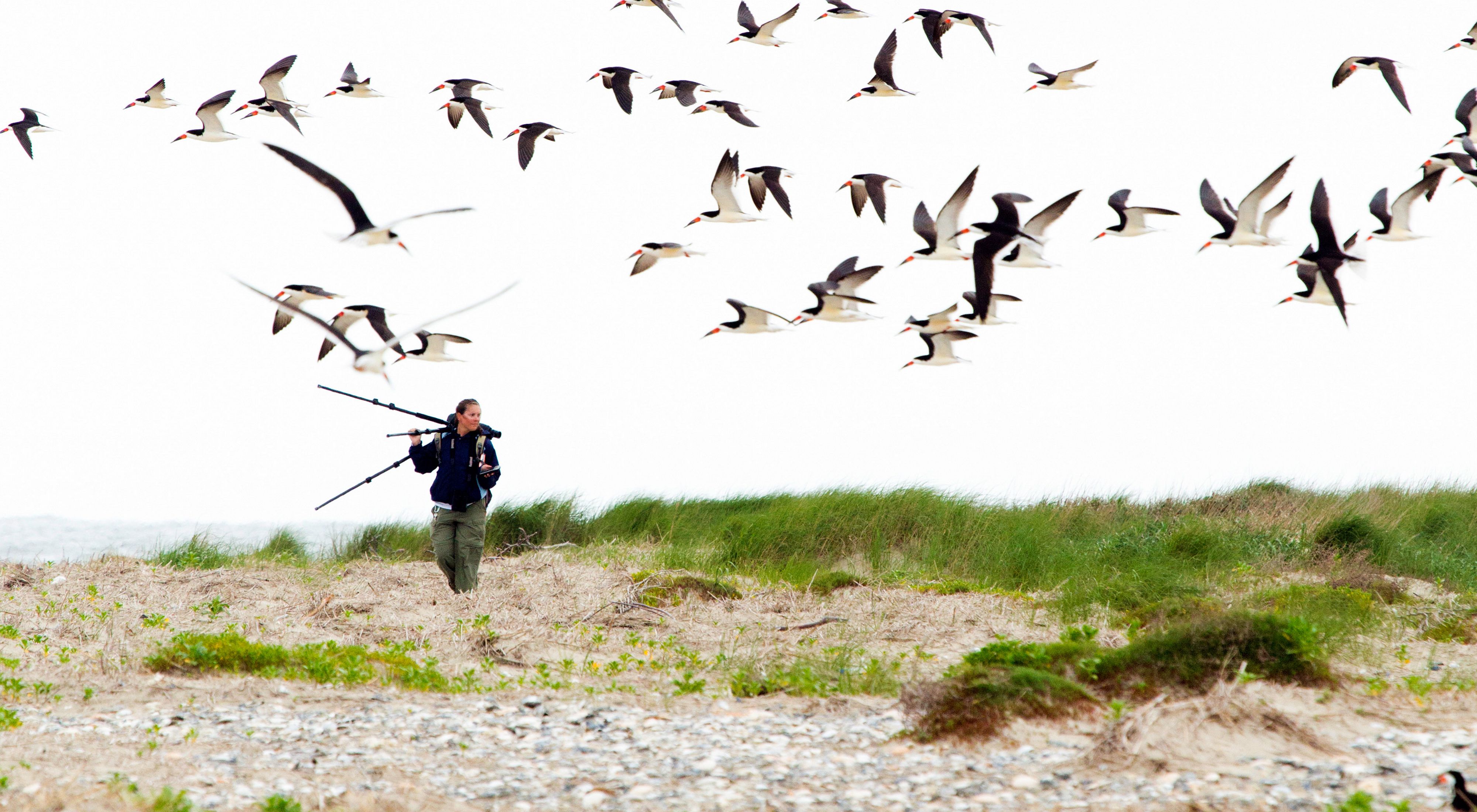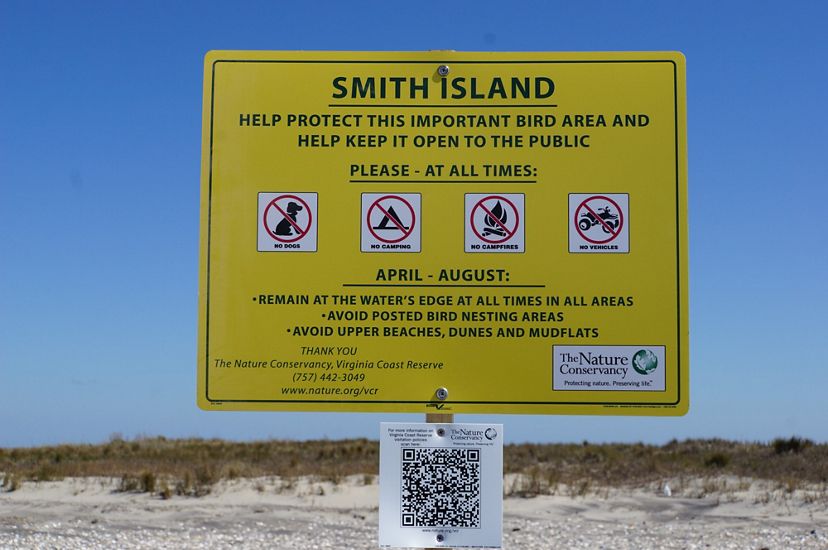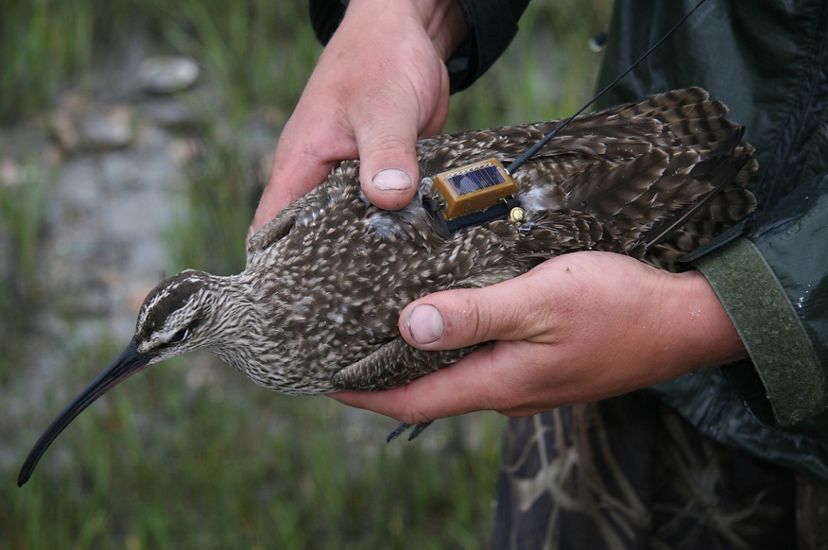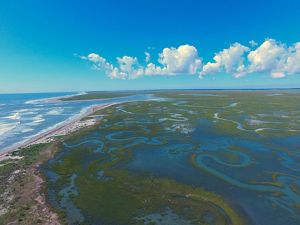Migratory Bird Conservation
Guided by decades of research and monitoring, our scientists are helping to protect migratory bird populations throughout VVCR’s coastal habitats.
For more than five decades, The Nature Conservancy’s Volgenau Virginia Coast Reserve (VVCR) has developed a Migratory Bird Program that focuses on protecting and managing these habitats for many species of breeding, wintering and migrating birds.
Critical Habitat
The barrier island beaches, marshes and mudflats of Virginia’s Eastern Shore provide globally important habitats for migratory birds throughout the year.
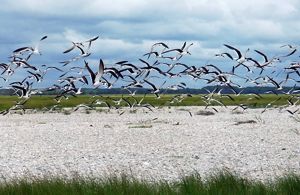
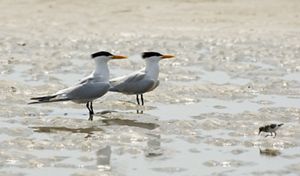
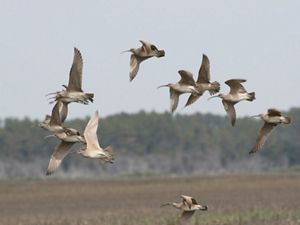
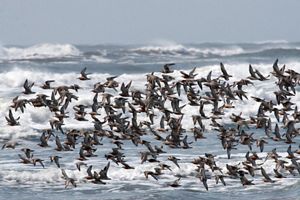
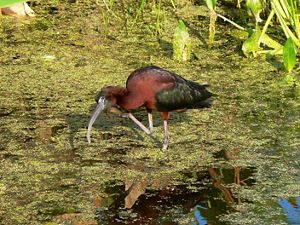

Black Skimmer: (Rynchops niger) The lower part of the black skimmer's knife-shaped bill is longer than the upper part. The birds feed by "skimming" the water's surface to catch small fish. © Connor Coleman

Royal Tern : (Thalasseus maximus) Several species of terns breed on Virginia’s barrier islands, including Least, Common, Forster’s, Gull-Billed, and Royal Terns. © Marc Del Santro

Whimbrel: (Numenius phaeopus) These long distance travelers may migrate over 4,000 miles between Arctic breeding grounds and wintering grounds in the Caribbean and South America. © Barry Truitt/TNC

Red Knot: (Calidris canutus) The Volgenau Virginia Coast Reserve hosts the second largest concentration of migrating red knots in the US. © Barry Truitt / TNC

Glossy Ibis: (Plegadis falcinellus) Glossy ibis can often be seen on Brownsville Preserve, foraging for food in shallow marshes or flooded fields. © John C. Winfree / TNC
Monitoring Nesting Birds
Every year from April through August, thousands of birds nest and raise their young on Virginia's barrier island beaches.
As part of VVCR's Migratory Bird Program, we work closely with federal and state partners including US Fish & Wildlife Service (USFWS), Virginia Department of Wildlife Resources (DWR) and Virginia Department of Conservation and Recreation (DCR) to monitor and protect the nesting pairs and colonies, or groups, of birds on the islands.
Long-term monitoring allows VVCR and our partners to track changes in the size, location and even reproductive success of these bird populations—information that is critical for guiding management actions.
Each year TNC hires seasonal technicians and interns to assist with these monitoring efforts.
Managing for Migratory Birds
Nesting birds at the Volgenau Virginia Coast Reserve, many considered threatened or endangered, must overcome many challenges to successfully produce young.
Storms and extremely high tides can wash out large numbers of nests or drown flightless chicks. Predators such as raccoons and foxes will eat eggs, chicks and even adult birds. And too much disturbance in their nesting areas can cause adults to leave nests and chicks, exposing them to predators or excessive temperatures.
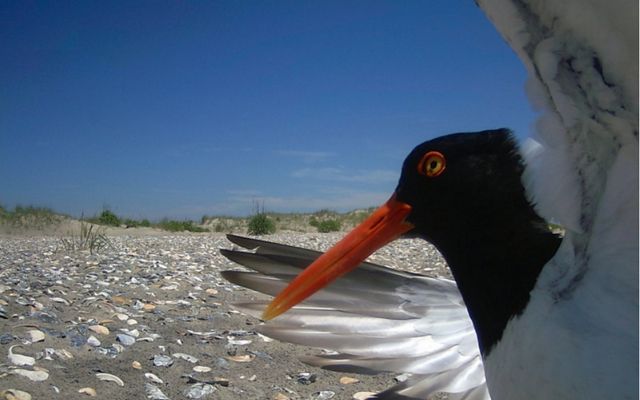
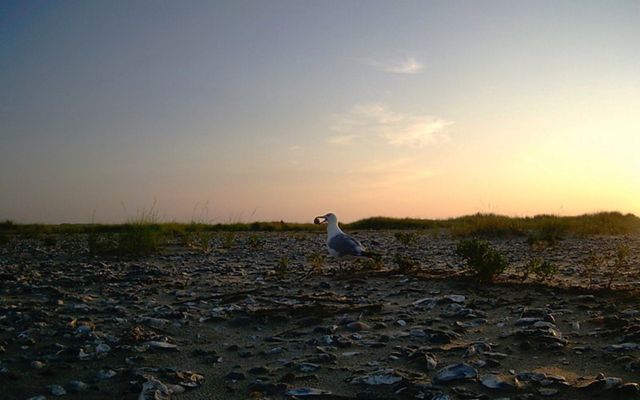
During the 2019 nesting season, VVCR implemented a project, funded by USFWS and the National Fish and Wildlife Foundation (NFWF), to use camera technology to evaluate predator populations and their impacts to nesting shorebirds on our barrier islands.
Seasonal Technician Aylett Lipford diligently reviewed more than 1.9 million photos from 55 nest cameras, documenting events like gulls eating shorebird eggs, ghost crab interactions and a Peregrine Falcon eating a shorebird chick. The results of this project have helped inform our management of the barrier islands.
A Birder's Delight
Explore this list of commonly seen species at the Volgenau Virginia Coast Reserve.
DownloadIn the spring and late summer, VVCR's beaches, marshes and mudflats are also flooded with hundreds of thousands of migrating shorebirds on their journeys between far-away breeding and non-breeding grounds.
Many of these species only spend a short amount of time in coastal Virginia every year, but the time they do spend here resting and feeding can make or break the success of their migratory journey. The barrier islands of Virginia have been recognized as a site of International Importance to shorebirds within the Western Hemisphere Shorebird Reserve Network.
Sharing the Beach
Human visitors to the islands—and their pets—can unknowingly trample eggs or chicks, keep adult birds from protecting their eggs or chicks from the hot sun or predators, attract more predators to the area and prevent birds from feeding themselves or their young enough food.
As part of our Migratory Bird Program, VVCR manages its barrier island properties to prevent some of these disturbances to the birds while still allowing for visitor access to these beautiful, remote natural areas.
Staff and volunteers conduct visitor outreach on the islands and at local boat ramps to inform people of the nesting activity. Staff and volunteers post hundreds of signs each year along the island chain to alert visitors to the presence of nesting birds.
Visit our barrier islands page to learn which TNC-owned barrier islands in Virginia are open for public use and about important use policies and restrictions.
Explore our Seaside is an online resource developed by TNC and partners, with support from the Volgenau Foundation, to help visitors discover all of the incredible resources that this region supports and to learn about the partners dedicated to managing and protecting these coastal treasures.
Conservation Partners
We work closely with many different partners to understand how bird populations use and depend on the Volgenau Virginia Coast Reserve for survival. We use that information to understand range-wide conservation needs and guide local management actions to protect and build resilient migratory bird populations both in coastal Virginia and throughout the hemisphere.
- US Fish & Wildlife Service
- Virginia Department of Wildlife Resources
- Virginia Department of Conservation and Recreation
- Center for Conservation Biology at the College of William and Mary
- Virginia Tech
- Virginia Marine Resources Commission
- Virginia Coastal Zone Management Program
- NASA / Wallops Flight Facility
- Coastal Virginia Wildlife Observatory
- National Park Service
- USDA Virginia Wildlife Services
CONTACT
Alexandra Wilke, Coastal Scientist
Phone: (757) 442-5417
Email: awilke@tnc.org
We Can’t Save Nature Without You
Sign up to receive monthly conservation news and updates from Virginia. Get a preview of Virginia's Nature News email

